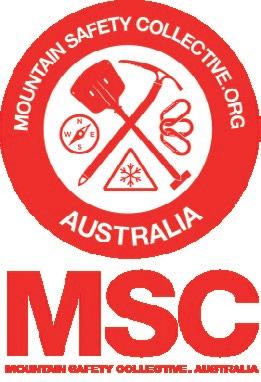
2 minute read
LAST YEAR’S LESSONS
from Wild #188
The Aussie backcountry saw unusually high avalanche activity last year. But avalanches aren’t the only risks out there, says Mountain Safety Collective Ambassador Alex Parsons as she reflects on the year that was.
The Australian mountains have seen their first handful of snowstorms. Today I was pelted by hail up at Charlotte Pass; meanwhile, there was slush at my feet and the snow gums collected an icy armour. Winter is nearly here, and as our fingers get colder each morning, our minds move to backcountry adventures. This is a time to reflect on lessons learned from the 2022 season. Did you discover the perfect backcountry snack? A faster way to transition? Have you finally got your layering right? Weather is paramount in Australian touring, and it pays to be prepared for quickly changing conditions. Crucially, what did you learn about safety?
Advertisement
The Risk Of Australian Avalanches
We’re starting to see climate change affect our snowpack, with inconsistent storms, rain at higher elevations, and fluctuating temps. Last year, Aussie mountains saw an above average number of avalanches in the backcountry. In fact, I’ve been in the industry, either training or working as a backcountry guide, for five years, and I’ve never seen anything like it.
Mountain Safety Collective is lucky to have highly qualified snow science experts, like Program Manager Craig Sheppard, who has completed the Canadian Avalanche Association’s highest-level course.
“Last season,” says Craig, “there were a couple of interesting avalanche cycles. The first was in June, when several glide crack avalanches were reported in both Victoria and NSW. The Sentinel Peak area had notable avalanches, some up to size three. The second cycle was a series of avalanches, again in both Victoria and NSW, that were failing on a persistent weak layer (PWL) that was buried in the snowpack earlier in the season. The Australian Alps are not often plagued by PWLs. It leaves me wondering: Will PWLs be something we see more regularly due to climate change?”
So, how can we best avoid or manage this hazard? Well, heading to MSC’s website for both mountain safety tips and reports on daily conditions is a great start. Perhaps it’s time to do an Avalanche Skills Training refresher, or to practise your beacon skills. It doesn’t take long to bury some beacons for friends to dig up. Those at Hotham can practise these skills at the Avalanche Training Centre, and MSC is in the process of rolling out more of these at other resorts.
AVALANCHES AREN’T THE ONLY RISK
MSC’s conditions reports cover surface conditions, too. Craig explains why the reports don’t solely focus on avalanche hazards: “Other hazards are often more prominent in these mountains, such as adverse surface conditions (ie icy slopes), and rapid changes in weather leading to a lack of visibility in the alpine. Icy surface conditions pose a real risk particularly when travelling on steep slopes. When there is a ‘Localised Ice’ hazard or a ‘Widespread Ice’ hazard in the Australian Alps, specialised tools such as crampons (for both skis and boots) and ice axes are often necessary to enable safe travel. If you’re not comfortable with these implements, avoiding steep slopes in these conditions is key.”
The Season Ahead
As we break out winter gear and consider tuning our edges, we can’t help wondering whether it’ll be the powder-filled season of our dreams. Some climate models are predicting a warmer and drier winter this year, with El Niño and a positive IOD looking likely. This is a double-edged sword for backcountry lovers: We enjoy clear skies and views for days, but it’s likely these will also bring crusty mornings. While no one knows what the season will really hold, it’s safe to say ice will be a frequent hazard in the Australian backcountry.
MOUNTAIN SAFETY COLLECTIVE BY THE NUMBERS:
- Approx 1,000 members
- 13,000 individuals accessed conditions reports in 2022
- Inviduals averaged 5-15 reports each through the season
More Resources
Want to see a gallery of images of Australia’s unusally high avie activity last year?Go to wild.com.au/news/ 2022-avalanches
To learn more about MSC, and to access conditions reports, safety tips and much more, visit: MountainSafety Collective.org











